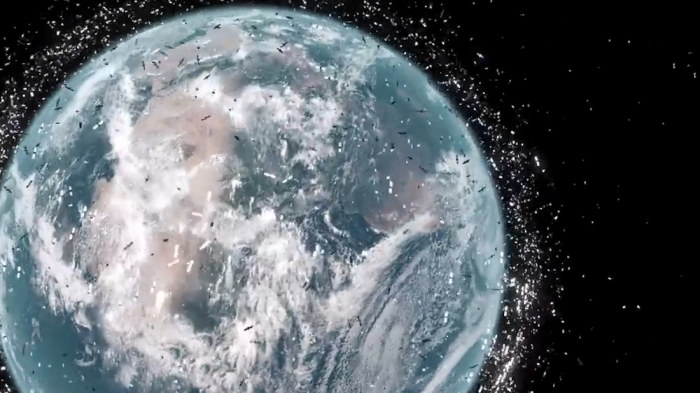In Earth’s orbit itself, the U.S. Space Surveillance Network is tracking more than 14,000 pieces of space junk that are larger than 10 cm (4 inches) across, such as defunct satellites and rocket stages. It’s estimated that there are millions of pieces smaller than that.
Because of the high speeds at which objects move in Earth’s orbit, even little pieces of space debris can cause damage. Windows on the space shuttle often had to be replaced because of damage from collisions with debris smaller than a millimetre.
Even satellites have been destroyed by space debris. In 2009 the defunct Russian Cosmos 2251 military communications satellite collided with the functioning Motorola Iridium 33, destroying both satellites. In 2013 a Russian laser-ranging satellite, BLITS, had to abandon its mission because of an unexpected change in its orbit. The culprit? A piece of the Chinese Fengyun-1C weather satellite, which had been deliberately destroyed in 2007 by the Chinese military in an anti-satellite test. The destruction of these three satellites, Fengyun-1C, Cosmos 2251, and Iridium 33, created almost half of the space junk below 1,000 km (620 miles).
What can be done to clean up space? Space agencies and companies that launch satellites have been taking steps such as deorbiting satellites when their missions are finished. Tests of technologies to actually remove space debris by capturing pieces with a net or harpoon have been made. Proposed constellations like SpaceX’s Starlink (4,409 satellites) and Amazon.com’s Project Kuiper (3,236 satellites), which would greatly increase the number of satellites in orbit, have had to include space debris mitigation plans when seeking approval from regulatory bodies.
Read the original article on britannica.com.
More about: space
















































